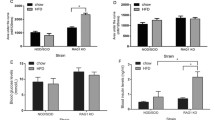Abstract
To evaluate the carcinogenicity of troglitazone in rasH2 mice, 7-week-old male and female rasH2 mice were fed a diet containing 0, 3,000 or 6,000 ppm troglitazone for 26 weeks. An increased tendency in the incidence of vascular tumors was observed in females of the 6,000 ppm group. The preliminary analysis using a high-density oligonucleotide microarray on a splenic hemangiosarcoma of a high dose female that could be obtained as a fresh sample showed that several genes related to the ras/MAPK pathway activation, angiogenesis, cell cycle and cell multiplication were up-regulated. In addition, most of the genes up-regulated were confirmed by the reverse transcriptase-polymerase chain reaction (RT-PCR). These results may suggest that the carcinogenic susceptibility of rasH2 mice to troglitazone is relatively low and up-regulations of the ras/MAPK pathway and angiogenesis-related genes are probably involved in the production of splenic hemangiosarcomas in rasH2 mice given troglitazone.




Similar content being viewed by others
References
Asano T, Wakisaka M, Yoshinari M, Nakamura S, Doi Y, Fujishima M (2000) Troglitazone enhances glycolysis and improves intracellular glucose metabolism in rat mesangial cells. Metabolism 49:308–313
Brown LF, Dezube BJ, Tognazzi K, Dvorak HF, Yancopoulos GD (2000) Expression of Tie1, Tie2, and angiopoietins 1,2, and 4 in Kaposi’s sarcoma and cutaneous angiosarcoma. Am J Pathol 156:2179–2183
Claffey KP, Wilkison WO, Spiegelman BM (1992) Vascular endothelial growth factor. Regulation by cell differentiation and activated second messenger pathways. J Biol Chem 267:19317–19322
Daniela B, Saveria A, Stefania C, Sabrina G, Maria B, Emilia M, Hongyan Q, Catia M, Mariaelena G, Marcello M, Sebastiano A (2006) Peroxisome proliferators-activated receptor (PPAR) gamma activates p53 gene promoter binding to the NFkB sequence in human MCF7 breast cancer cells. Mol Endocrinol 28:[Epub ahead of print]
D’Arcy PF and Harron DWG (Eds.) (1998) In: Proceedings of the fourth international conference on harmonization. Queen’s University of Belfast. N. Ireland
Duddy SK, Parker PF, Bleavins MR, Gough AW, Rowse PE, Gorospe S, Dethloff LA, de la Iglesia FA (1999) p53 is not inactivated in B6C3F1 mouse vascular tumors arising spontaneously or associated with long-term administration of the thiazolidinedione troglitazone. Toxicol Appl Pharmacol 156:106–112
Elangbam CS, Brodie TA, Brown HR, Nold JB, Raczniak TJ, Tyler RD, Lightfoot RM, Wall HG (2002) Vascular effects of Gl262570X (PPAR-gamma agonist) in the brown adipose tissue of Han Wistar rats: a review of 1-month, 13-week, 27-week and 2-year oral toxicity studies. Toxicol Pathol 30:420–426
Ghazzi MN, Perez JE, Antonucci TK, Driscoll JH, Huang SM, Faja BW, Whitcomb RW (1997) Cardiac and glycemic benefits of troglitazone treatment in NIDDM. The Troglitazone Study Group. Diabetes 46:433–439
Herman JR, Dethloff LA, McGuire EJ, Parker RF, Walsh KM, Gough AW, Masuda H, de la Iglesia FA (2002) Rodent carcinogenicity with the thiazolidinedione antidiabetic agent troglitazone. Toxicol Sci 68:226–236
Iatropoulos MJ, Williams GM (2004) The function and pathology of brown adipose tissue in animals and humans. J Toxicol Pathol 17:147–153
Jeri El-Hage, Ph.D. (2004) “Preclinical and clinical safety assessments for PPAR agonists” DIA Presentations, Washington, DC. http://www.fda.gov/cder/present/DIA2004/default.htm
Keller H, Mahfoudi A, Dreyer C, Hihi AK, Medin J, Ozato K, Wahli W (1993) Peroxisome proliferators-activated receptors and lipid metabolism. Ann N Y Acad Sci 684:157–173
Maruyama C, Tomisawa M, Wakana S, Yamazaki H, Kijima H, Suemizu H, Ohnishi Y, Urano K, Hioki K, Usui T, Nakamura M, Tsuchida T, Mitsumori K, Nomura T, Tamaoki N, Ueyama Y (2001) Overexpression of human H-ras transgene is responsible for tumors induced by chemical carcinogens in mice. Oncol Rep 8:233–237
Mitsumori K (2003) Possible mechanism on enhanced carcinogenesis of genotoxic carcinogens and unsolved mechanisms on lesser carcinogenic susceptibility to some carcinogens in rasH2 mice. J Toxicol Sci 28:371–383
Nesfield SR, Clarke CJ, Hoivik DJ, Miller RT, Allen JS, Selinger K, Santostefano MJ (2005) Evaluation of the carcinogenic potential of clofibrate in the rasH2 mouse. Int J Toxicol 24:301–311
Okamura M, Suida K, Muto T, Kashida Y, Machida N, Watanabe T, Mitsumori K (2004) Analysis of gene expression profiles of forestomach tumors in rasH2 mice initiated with N-ethyl-N-nitrosourea. Arch Toxicol 78:688–696
Okamura M, Unami A, Matsumoto M, Oishi Y, Kashida Y, Mitsumori K (2006) Gene expression analysis of urethane-induced lung tumors in rasH2 mice. Toxicology 217:129–138
Saltiel AR, Horikoshi H (1995) Thiazolidinediones are novel insulin-sensitizing agents. Curr Opin Endocrinol Diabetes 2:341–347
Saltiel A R, Olefsky JM (1996) Thiazolidinediones in the treatment of insulin resistance and type II diabetes. Diabetes 45:1661–1669
Storer RD, Freench JE, Haseman J, Hajian G, Legrand EK, Long GG, Mixson LA, Ochoa R, Sagartz JE, Soper KA (2001) p53+/− Hemizygous knockout mose: Overview of available data. Toxicol Pathol 29:30–50
Tamaoki N (2001) The rasH2 transgenic mouse: nature of the model mechanistic studies on tumorigenesis. Toxicol Pathol 29:81–89
Tontonoz P, Hu E, Spiegelman BM (1994) Stimulation of adipogenesis in fibroblasts by PPARγ2, a lipid-activated transcription factor. Cell 79:1147–1156
Toyosawa K, Okimoto K, Kobayashi I, Kijima K, Kikawa E, Kohchi M, Koujitani T, Tanaka K, Matsuoka N (2001) Di(2-ethylhexyl)phthalate induces hepatocellular adenoma in transgenic mice carrying a human prototype c-Ha-ras gene in a 26-week carcinogenicity study. Toxicol Pathol 29:458–466
Tsuchiya T, Kobayashi K, Sakairi T, Goto K, Okada M, Sano F, Sugimoto J, MorohashiT, Usui T, Mutai M (2002) Skeletal myopathy in transgenic mice carrying human prototype c-Ha-ras gene. Toxicol Pathol 30:501–506
Yamamoto S, Mitsumori K, Kodama Y, Matsunuma N, Manabe S, Okamiya H, Suzuki H, Fukuda T, Sakamaki Y, Sunaga M, Nomura G, Hioki K, Wakana S, Nomura T, Hayashi Y (1996) Rapid induction of more malignant tumors by various genotoxic carcinogens in transgenic mice harboring a human prototype c-Ha-ras gene than in control non-transgenic mice. Carcinogenesis 17:2455–2461
Acknowledgment
This work was supported in part by Grants-in-Aid for Cancer Research from the Ministry of Health, Labor and Welfare of Japan.
Author information
Authors and Affiliations
Corresponding author
Rights and permissions
About this article
Cite this article
Jin, M., Takahashi, M., Moto, M. et al. Carcinogenic susceptibility of rasH2 mice to troglitazone. Arch Toxicol 81, 883–894 (2007). https://doi.org/10.1007/s00204-007-0218-1
Received:
Accepted:
Published:
Issue Date:
DOI: https://doi.org/10.1007/s00204-007-0218-1




